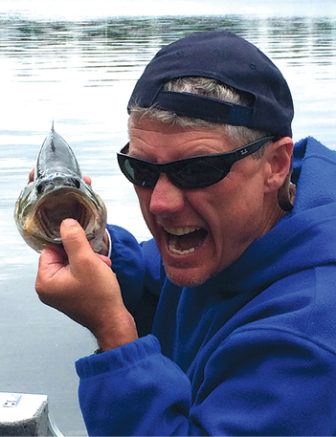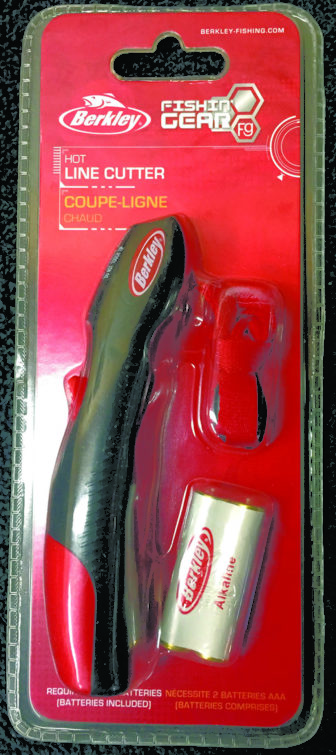 You see, I’m part of a group of consumers that contributes approximately $7 million a year to projects throughout the state designed to conserve and enhance fish and wildlife populations and their habitats. These projects are funded through a program commonly known as the Wildlife and Sport Fish Restoration Program. Here’s how it works:
You see, I’m part of a group of consumers that contributes approximately $7 million a year to projects throughout the state designed to conserve and enhance fish and wildlife populations and their habitats. These projects are funded through a program commonly known as the Wildlife and Sport Fish Restoration Program. Here’s how it works:
The federal government imposes a 10 percent excise tax on certain hunting, fishing and boating gear, tackle and supplies.
Excise tax revenues are held in a trust fund managed by the U.S. Fish and Wildlife Service (USFWS).
USFWS provides grants to state fish and wildlife agencies that make their own decisions on how to utilize the funds.
In Connecticut, the funds are used for things like: research, education, habitat restoration, species restoration, control of invasive species and acquisition of access rights.
Of course, I play only a very small role in funding the program. But I take my role seriously. Each year, I spend hundreds of dollars on tackle and gear, some of which I never use, and most of which is of dubious utility.
Take, for example, the Hot Line Cutter I paid $9.99 (plus shipping) for. According to the ad, the cutter’s tip (which heats to 1200 degrees Fahrenheit) “cauterizes fishing line to prevent fraying and knots from slipping.” Three years after I purchased it online, it’s still in its package. I just can’t bring myself to trust my inevitable world-record fish to a knot cauterized by a device that runs on two AAA batteries.

One of Mark’s many contributions to the Wildlife & Sport Fish Restoration Fund.
You’d think such reservations would occur to me before I finalize a purchase, but they never do. Well, actually they do, but I almost always ignore them.
It’s a tough dilemma. Do I risk missing out on the next “sure-thing,” or accept that I might buy something useless and/ or just plain stupid? Knowing my fishing buddies will make fun of me either way, I usually err on the side of contributing to the preservation and enhancement of outdoor recreational activities.
As I said, you’re welcome.
It’s not always easy, though. Manufacturers and retailers are constantly pushing the envelope, blurring the line between clever and stupid. To give you a taste of what I face, I’ve prepared the following quiz. See if you can tell whether each of the following products is real (the product is currently available on the market and I have accurately named and described it), sorta real (available, but not accurately named or described), or fake (not currently available). Answers are on page 35.
1. The Whopper Plopper. One-third the length of this lure is a propeller that spins as you retrieve it through the water. It creates a “plop-plop-plop” sound that attracts whoppers.
2. The Bait Cam. A tiny, underwater camera you attach to your bait or hook. It captures footage of fish as they bite.
3. The Panhandler. A device used for filleting fish. It employs a dual-bladed knife to cut, in a single stroke, fillets from both sides of the fish.
4. Camo Drops. Sinkers colored in camouflaged patterns. Used in water conditions where the normal silver, black or grey sinkers would spook fish.
5. Ankle Rod Holders. Rod holders incorporated into braces that attach to your ankles. They provide quick access to your rods while you are in a seated position, freeing your hands for drinking beer, etc.
6. The Fish Line Welder. A more sophisticated version of the Hot Line Cutter, this device creates a weld between lines (or sections of the same line), eliminating knots entirely.
7. The Worm Blower. A plastic bottle with a small needle at its mouth. Squeezing the bottle creates a burst of air used for drying lures, particularly flies.
8. Mama Mia’s Pesto Flavored Tube Baits. A soft plastic lure that is infused with a substance that smells and tastes like pesto.
9. Fish Fingers. A device used to enhance pictures taken of a fish by placing it closer to the camera. It consists of extendable rods with clamps on the end. The clamps are disguised as large fingers.
10. The Trolling Bobber. A bobber with its own onboard electric motor. Used to take your line to places where you might not be able to cast it.
Answers
1. Real. There are at least four different models of the Whopper Plopper. Each comes in multiple sizes and colors. Prices range from $12.99 to $20.99 (per lure).
2. Sorta real. To the best of my knowledge, there is no available camera that you attach to your bait or hook. There are, however, a number of cameras designed for use in filming biting fish, including cameras disguised as lures. Some models even record and transmit data like location, water temperature, etc.
3. Real. I own one. I’ve used it once. It doesn’t really work.
4. Real. On one hand, I can’t believe camouflage-patterned sinkers work any better than, say, brown sinkers. On the other hand, you never know. They’re on my shopping list.
5. Fake.
6. Real. You can buy a complete system, including the welder, a charger and welding supplies on Amazon.com for $199.95. I am not even remotely interested (at least not until I see if the Hot Line Cutter works).
7. Sorta real. A company called Berkley makes the Worm Blower, but it doesn’t dry lures. It’s used to inflate live bait, like a night crawler, to make it buoyant.
8. Sorta real. Or fake, depending on how you look at it. There is no “Mama Mia” brand of tube baits. Nor are there (again, so far as I know) any baits infused with pesto flavor. There are, however, many flavor and/ or scent-enhanced baits. Soft plastic lures are available in flavors that include: chocolate, salt, coffee, garlic and something called “Bite Juice.”
9. Fake. Although, I don’t know why.
10. Real. This is the kind of thing I’m a sucker for. How can I not equip myself with a tool to get bait to areas (like under thick branches or under docks) that would otherwise be unreachable? Imagine the stunned looks of envy from other fisherman. Even though it appears that there is no way to steer the bobbers, I’m getting me one. Worst case scenario, I will contribute another $1.40 to the Wildlife and Sport Fish Restoration Program.